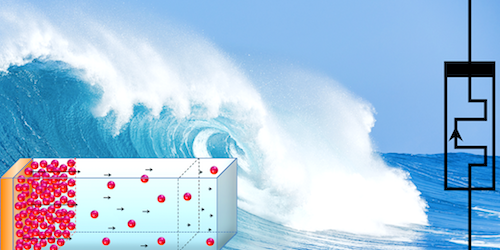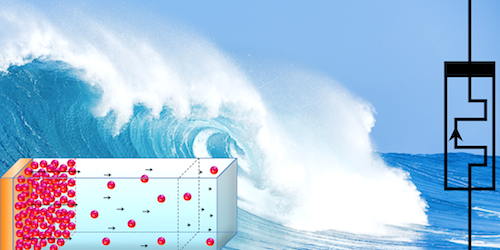Waves That Shock Resistance
Today’s nonvolatile memories, such as flash drives, are based on conventional silicon technologies. But researchers are exploring alternative materials, like transition-metal oxides, for building faster and higher density memories. Recent experiments show that an applied electric field can induce, within a few nanoseconds, a large change in the resistivity of these oxides. This change, which is nonvolatile and reversible, could be used to store information. But current theories cannot fully explain this resistive switching behavior. Now, a study by Shao Tang at Florida State University, Federico Tesler at the University of Buenos Aires, and co-workers suggest that the effect can be initiated by ionic defects propagating like shock waves through the material.
The resistance properties of transition-metal oxides are governed by oxygen vacancies—defects in which oxygen atoms are missing from a lattice site. To model resistive switching, the authors calculated how the distribution of these vacancies evolved in a manganese oxide following the sudden application of an electric field via an electrode. The results show that the resistance change is generated via a two-step process. First, vacancies accumulated at the electrode propagate through the highly resistive electrode-material interface, creating the front of a shock wave. Second, the vacancy shock wave enters the bulk material. Since electrons move between metal atoms via the oxygen, the vacancies reduce the electron mobility. Hence as the vacancy wave leaves the interface, the macroscopic resistance of the material decreases. The model results were confirmed by experiments on a manganese-oxide device. These new insights into the microscopic mechanisms behind resistive switching may help researchers engineer better memory devices based on transition metals.
This research is published in Physical Review X.
–Matteo Rini





